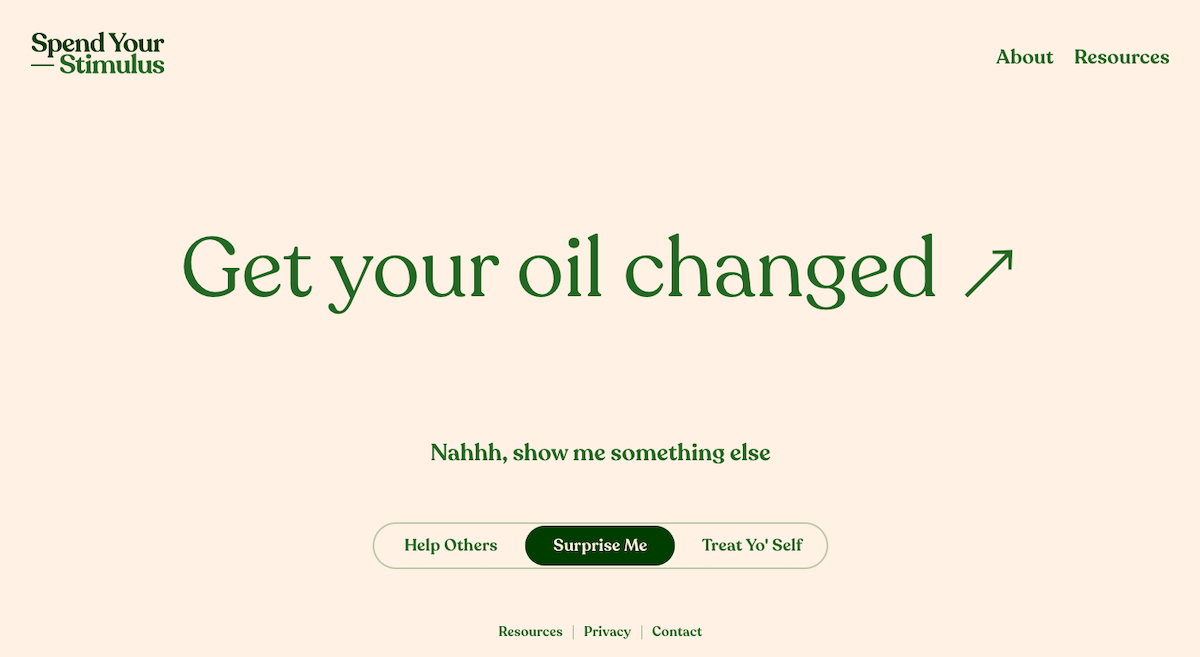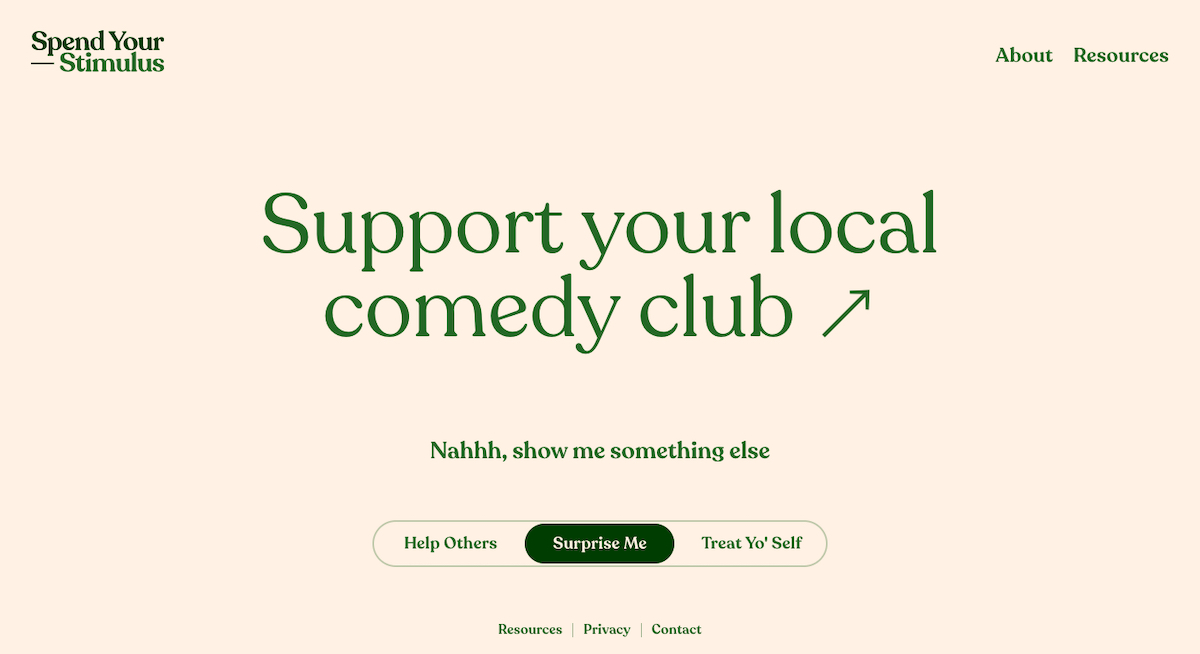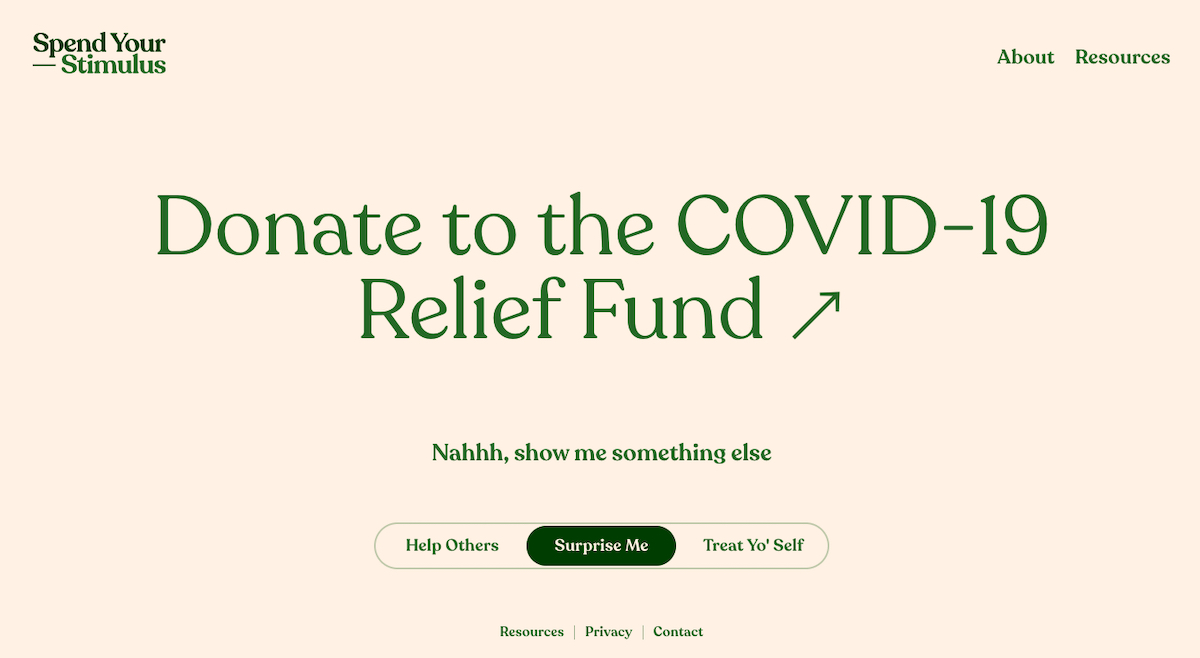By now, most eligible Americans have received their third-round $1,400 stimulus checks from the federal government. The funds are meant to — it’s in the name — stimulate the U.S. economy by encouraging recipients to spend.
The pandemic and recession are still not over, and many check recipients will need to save those dollars or pay for emergency expenses. But for those who can afford to spread the wealth, a group of Philly natives have some suggestions for ways people can use their checks to support local small businesses and organizations.
Digital marketer Mike Bodenberger and three friends built Spend Your Stimulus as a side project. Open up the website’s homepage to see a random suggestion, like “Add some new jewelry to your collection” or “Help kids reach their dreams,” then click the suggestion to be directed to a Google Maps search for relevant businesses, or a specific org’s website. You can also filter the suggestions by philanthropic options (“Help Others”), purchases (“Treat Yo’ Self”) or both (“Surprise Me”). Want a new suggestion? Click “Nahhh, show me something else.”
Check it outBodenberger told Technical.ly about the tech side of Spend Your Stimulus, collaborating with others during a pandemic and future plans for the site.
###
What’s the Spend Your Stimulus tech stack?
We designed the site with Figma and built it on a modern web stack using Gatsby’s open-source frontend framework, Airtable as our backend database, and connected the two using Netlify Functions.
The custom-built Netlify Functions pull data using the Airtable API, format the JSON data, and save it to a local file within the project — which helps increase performance and reduce the number of API calls. The data returned from the Netlify Function endpoint is used to power a custom Gatsby build on the frontend.
The result is a super quick web app that can scale indefinitely, with a database that can be mostly managed by non-technical persons like myself. A lot of our idea recommendations also utilize Google Maps queries to deliver localized results.

(Screenshot)
Who else is involved with your project?
The other folks involved in the project are Ryan Johnson, Chris Reed and Ryan Overhiser. I approached Ryan Johnson and Chris Reed about working on the project in early January, as plans for the $1,400 government stimulus checks were getting closer to a reality. Ryan Johnson and I previously worked together at Allen & Gerritsen and Chris had just finished a coding bootcamp at Tech Elevator, so I thought it would be a great project for us to collaborate on together.
We worked through UX and content strategy, designing a look and feel for the site, and building a basic prototype. At that point, we asked our friend and copywriter, Ryan Overhiser (based in San Francisco, California), to help us establish the tone for the site. With all of the pieces in place, Ryan Johnson and Chris collaborated on development to bring it all to life.
This was definitely a fun project for us. It’s not easy to socialize with friends in real life during the pandemic, so it gave us something to do together. But it was more than just a fun website build, it was a meaningful one, too. Most of the folks who worked on the site are fortunate enough to have kept full-time employment throughout the pandemic, however, a lot of our friends, family, and community members haven’t been as lucky. So we really aimed to create something that could inspire people to help others by spending what they can right now to support local businesses and those that might be struggling.

(Screenshot)
What’s next for your app? Do you have plans to expand beyond Philly?
We plan to update and iterate on the ideas featured on the site based on analytics and user feedback. Version 1 of the site was a pretty quick build and over the next few months, we’re planning to look at how we can use the Google Maps API to dynamically deliver localized recommendations on the frontend of the site, rather than having to click out to Google Maps to view results nearby.
We juggled with making it a Philly-specific experience, but ultimately decided that the impact and usefulness could scale nationally. The biggest sacrifice based on that decision was that we would have to deliver relatively generic idea recommendations vs. directly recommending a certain local business. For example, an idea on our site is “grab a slice, or a full pie” which links out to a Google Maps query for “pizza near me” rather than something like “grab a slice from Pizzata Pizzeria” for users that are in Philly. That’s where we’d like to bring the next iteration of the site to make it a more personalized and streamlined experience.
Michael Butler is a 2020-2022 corps member for Report for America, an initiative of The Groundtruth Project that pairs young journalists with local newsrooms. This position is supported by the Lenfest Institute for Journalism.Join the conversation!
Find news, events, jobs and people who share your interests on Technical.ly's open community Slack

Philly daily roundup: Closed hospital into tech hub; Pew State of the City; PHL Open for Business

Philly daily roundup: A better coffee supply chain; Philly Tech Week returns; Apply to Pennovation Accelerator

A biotech hub is rising at Philadelphia’s shuttered Hahnemann Hospital campus


